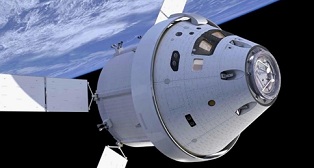Reference no: EM133117890
5MA035 Aircraft Systems and Avionics - University of Wolverhampton
Assignment - Aircraft Systems and Avionics coursework
Learning outcome 1: Develop an understanding of integrated aircraft systems and how these systems interact and integrate.
Learning outcome 2: Analyse and evaluate how key aircraft systems are designed, operated, controlled, and instrumented.
Learning outcome 3: Utilise analytical skills in the design of simple avionic systems, including radio and radar communications systems.
Learning outcome 4: Select and critically evaluate appropriate methods and mechanisms in relation to aircraft systems design, testing, verification, validation, certification, reliability and safety.
Assignment Brief
Task - Essay

Figure 1: an artistic representation of the Orion capsule
Orion is a new NASA space capsule that is designed to enable manned deep-space missions, reaching distances from the Earth that were never reached previously.
The atmospheric reentry phase is a crucial phase of the mission, in which the structural integrity of the capsule is compromised by the extremely high wall heat flux values and temperatures reached on the surface of the vehicle. For this reason, the vehicle must be equipped with an adequate heat shield, which consists in a thermal protection system (TPS) capable of absorbing the heat load and dissipating it outside of the structure. However, undertaking a reentry from a deep-space mission, as compared to a reentry from orbit, causes significantly higher heat loads to be produced on the vehicle surface, which requires design and installation of a TPS with higher performance compared to previous reentry applications.
Conduct a research study and write a 2000 words essay on the thermal protection system used for the Orion capsule, as well as on different/altenrative types of TPS systems that can be used in similar applications, including your own suggestions/ideas for innovative solutions in view of future aerospace missions/challenges.
Reflect on the following points: what is the operating principle and the mechanism for the absorption/dissipation of the heat load for the Orion vehicle ? Which materials are used ? How are they assembled/manufactured and why ? In addition, conduct a research study on different/alternative types of thermal protection systems, i.e. systems that use a different operating principle/mechanism for heat dissipation. Reflect on: what are different/alternative strategies to dissipate the heat load ? are there any particular types of TPS system currently under investigation and why ? which materials are used and how are they assembled/manufactured ? In addition, reflect on potential new types of TPS, or improved/modified versions of the same considered types of TPS can be explored for future aerospace applications. What are the next future missions requiring efficient TPS systems that the aerospace scientific community is working on ?
What are the challenges associated with these missions (in the context of the TPS system) ? what are your ideas on potential innovations for new efficient and reliable TPS systems that can help the aerospace scientific community solve the considered challenges ?
Discuss on the above menioned points with a critical reflection approach, and provide your own interpretation and ideas about innovative solutions to counteract the aerodynamic heating problem for next future aerospace missions. Make use of figures and sketches as appropriate. Perform an adequate literature search, cite all the used sources within your text using Harvard referencing style,
and add a "Bibliography" (or "References") section at the end of your essay listing all your references. Write in a clear and concise way, dividing the main body in different paragraphs as appropriate. Indicate the overall word count (excluding the References section) at the end of your essay. Word limit: 2000 words.
Task 2
An aircraft is at a distance (slant range) of 32 km from a VOR/DME ground station, and is sending the following interrogation (depicted in figure 2). Assume a time interval of 0.45 μs between two consecutive pulses of a pair. In figure 2, A represents the normalised amplitude of the signal.
i. With the help of suitable figures/sketches, describe the operation principle of a Distance Measuring Equipment (DME). What are the characteristics of the interrogation and the reply signals? How is the distance measured? In which way an aircraft can recognize the reply to its own interrogation among the replies to other aircraft interrogations? [word limit: 200 words]
ii. Determine the time delay (μs) that is read by the on-board receiver, and through which the distance is computed.

Figure 2: profile of the interrogation signal
Attachment:- Aircraft Systems and Avionics.rar